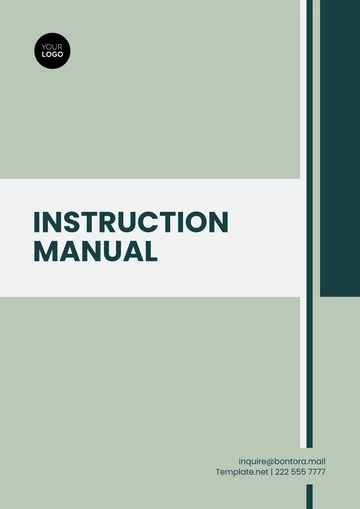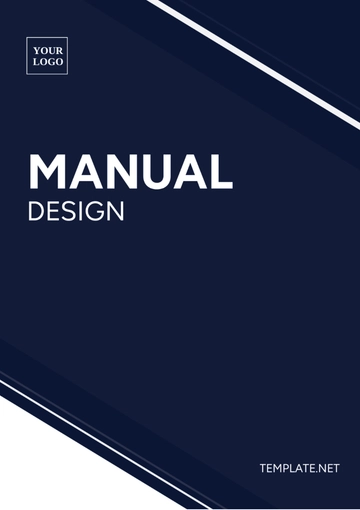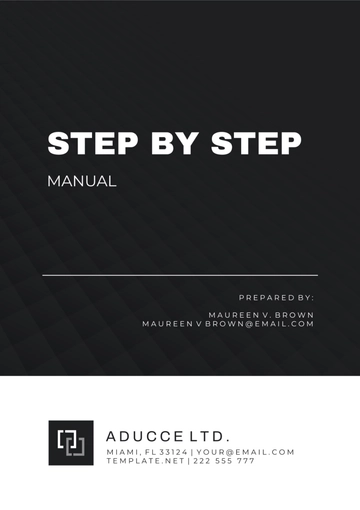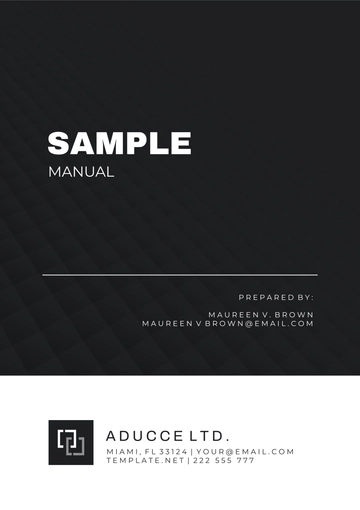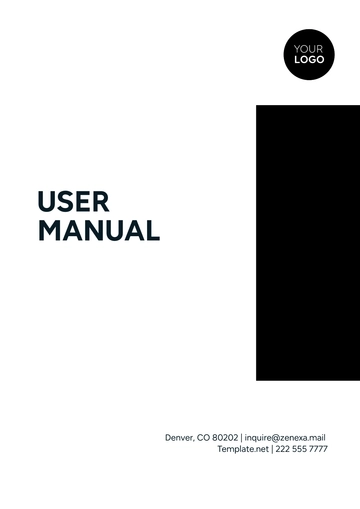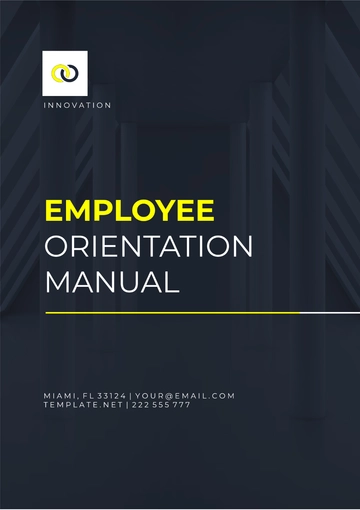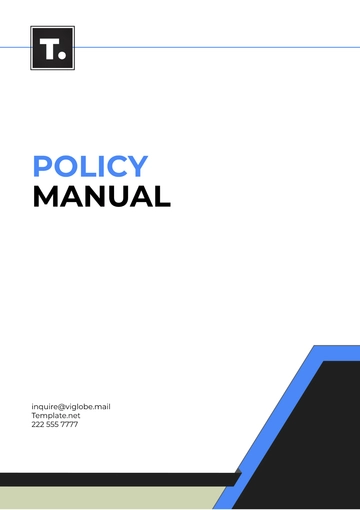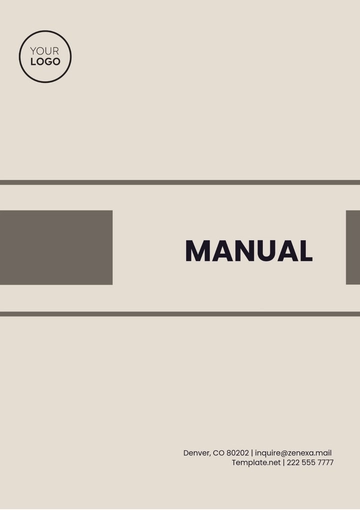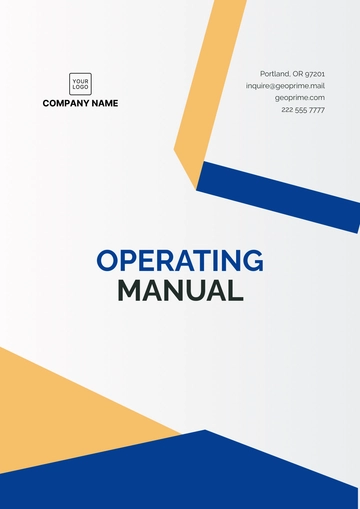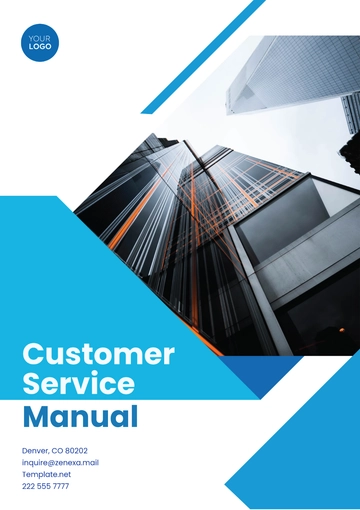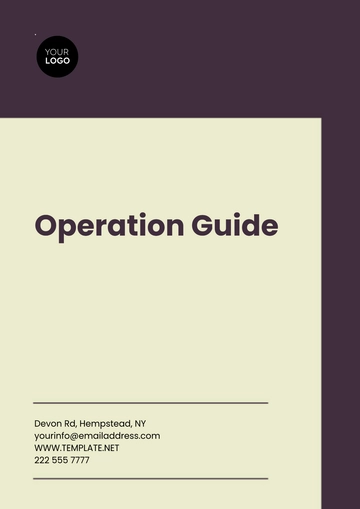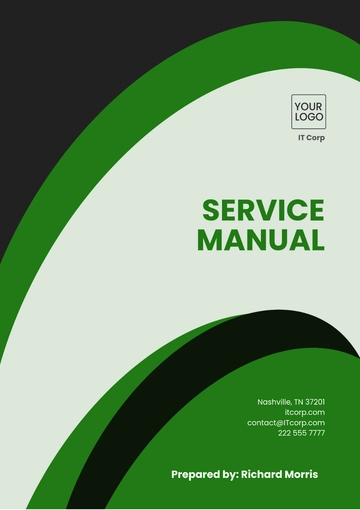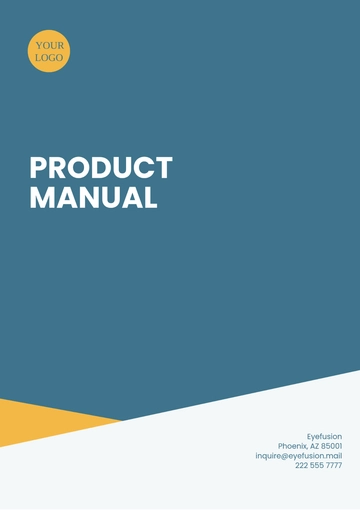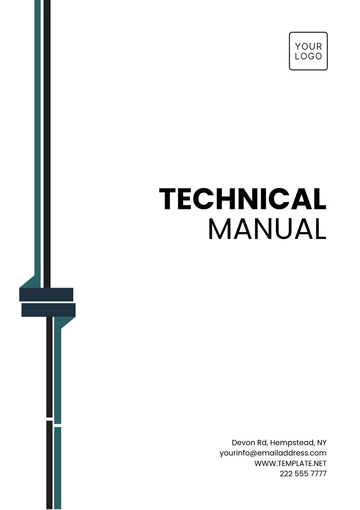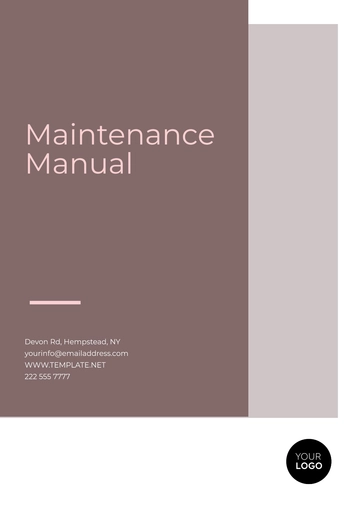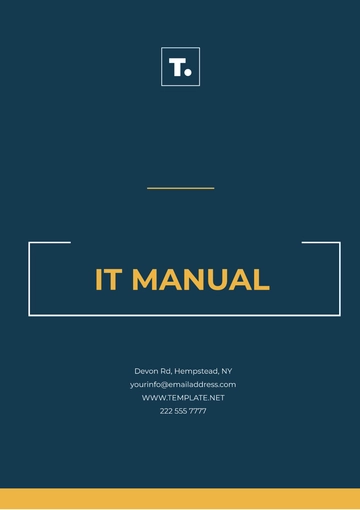Free Comprehensive Training Strategy Manual HR
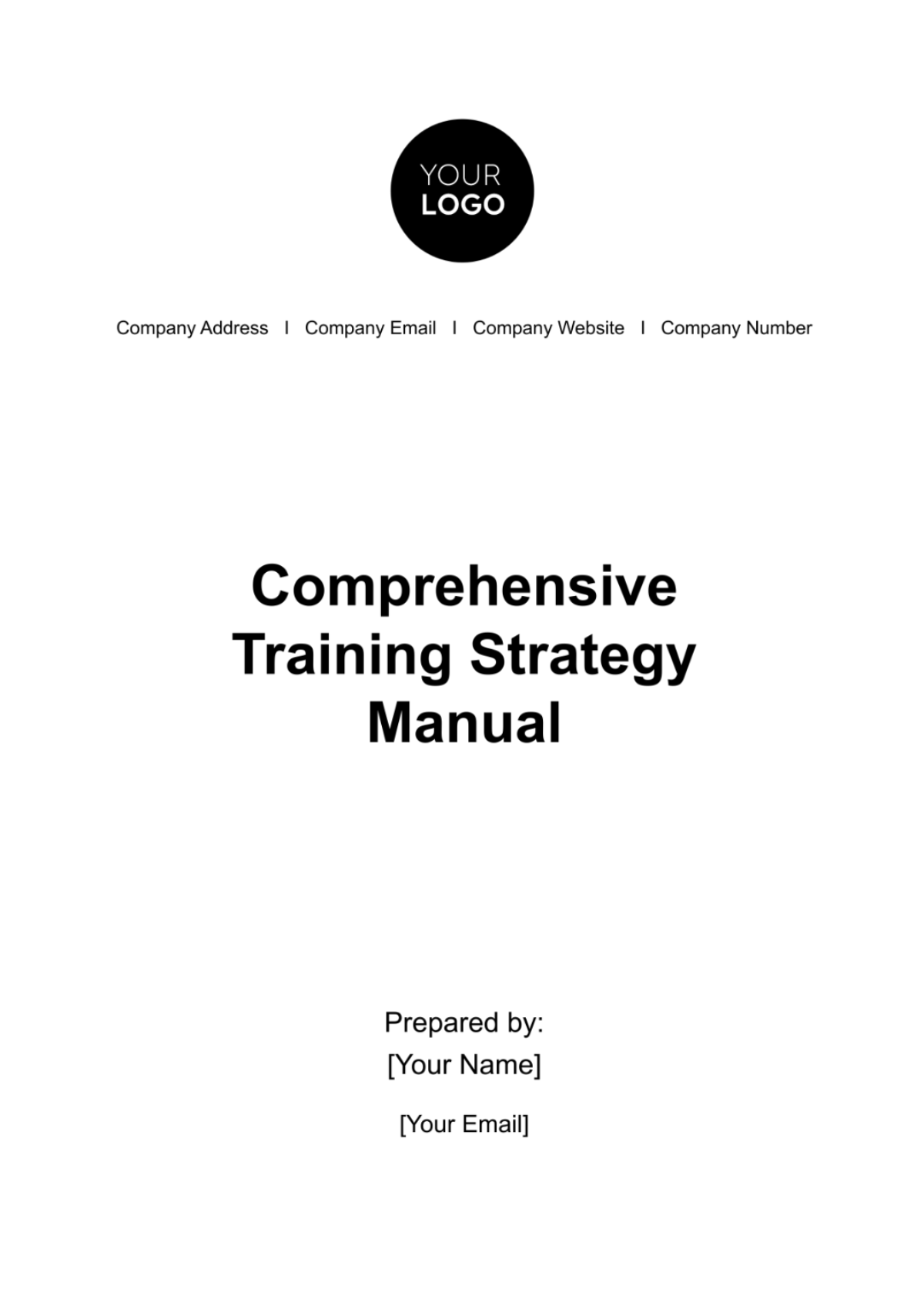
TABLE OF CONTENTS
1. Introduction .......................................................................................................3
Purpose of the Manual ..........................................................................................3
Importance of Training .........................................................................................3
Contact Information ..............................................................................................3
2. Training Objectives ...........................................................................................3
Overall Training Goals ...........................................................................................3
Specific Learning Outcomes ................................................................................3
3. Training Needs Assessment .............................................................................4
Methods for Identifying Training Needs ...............................................................4
Analysis of Training Gaps .....................................................................................4
4. Training Methods and Modalities .....................................................................4
Training Delivery Methods ...................................................................................4
Blended Learning Approach .................................................................................4
5. Curriculum Development ..................................................................................5
Defining Training Topics .......................................................................................5
Creating Training Content ....................................................................................5
Designing Training Materials ................................................................................5
6. Training Delivery ...............................................................................................5
Scheduling and Logistics ......................................................................................5
Trainer Selection and Preparation ........................................................................5
Training Facilities and Equipment ........................................................................5
7. Training Evaluation and Assessment ................................................................6
Evaluation Metrics ................................................................................................6
Feedback Mechanisms .........................................................................................6
Key Performance Indicators (KPIs) ......................................................................6
8. Budget and Resource Allocation ......................................................................6
Budget Planning ....................................................................................................6
Resource Allocation ..............................................................................................6
Cost Control Measures .........................................................................................6
9. Roles and Responsibilities ................................................................................7
Training Team Roles ..............................................................................................7
Managerial Roles ...................................................................................................7
Employee Responsibilities ....................................................................................7
10. Training Calendar ............................................................................................7
Annual Training Schedule .....................................................................................7
Flexibility for Ad Hoc Training Needs ...................................................................7
11. Continuous Improvement ................................................................................7
Utilizing Feedback for Enhancements ..................................................................7
Revising Training Strategies .................................................................................8
12. Compliance and Legal Considerations ...........................................................8
Regulatory Requirements .....................................................................................8
Legal Compliance Checklist .................................................................................8
13. Communication Strategy ................................................................................8
Employee Communication Plan ............................................................................8
Training Announcements .....................................................................................8
14. Feedback and Reporting .................................................................................8
Feedback Collection Process ...............................................................................8
Reporting to Management ....................................................................................9
15. Appendices ......................................................................................................9
Training Needs Assessment Template .................................................................9
Training Evaluation Survey Form ..........................................................................9
Sample Training Materials ....................................................................................9
Reference Documents ..........................................................................................9
1. Introduction
Purpose of the Manual
This Comprehensive Training Strategy Manual outlines the training approach, methodologies, and processes employed by [Your Company Name]. It serves as a reference document for HR professionals, trainers, and managers involved in training and development activities.
Importance of Training
Effective training is critical for the growth and success of our organization. This section highlights the significance of training in achieving our business objectives.
Contact Information
For inquiries related to this manual or training programs, please contact:
Training Department | [Training Email] |
HR Department | [HR Email] |
Phone | [HR Phone] |
2. Training Objectives
Overall Training Goals
Our training objectives are aligned with the strategic goals of [Your Company Name]. These objectives include enhancing employee skills, improving performance, fostering innovation, and ensuring compliance with industry standards and regulations.
Specific Learning Outcomes
Each training program will have specific, measurable learning outcomes that are directly linked to the skills and knowledge employees need to excel in their roles. These outcomes will be detailed in the respective training program documentation.
3. Training Needs Assessment
Methods for Identifying Training Needs
To ensure our training efforts are targeted and effective, we use various methods to identify training needs, including employee surveys, performance appraisals, competency assessments, and feedback from managers and team leaders.
Analysis of Training Gaps
Once training needs are identified, we analyze the gaps between current skills and desired skills. This analysis guides the development of tailored training programs to address these gaps.
4. Training Methods and Modalities
Training Delivery Methods
We employ a variety of training delivery methods, including:
Classroom Training
On-the-Job Training
E-Learning
Workshops and Seminars
Mentorship Programs
Simulations
Technology and Tools
Leveraging technology and training tools, we offer a dynamic and engaging learning experience. Our Learning Management System (LMS) allows for easy course registration, progress tracking, and assessment.
Blended Learning Approach
Incorporating both traditional and online training methods, we adopt a blended learning approach to maximize flexibility and effectiveness in our training programs.
5. Curriculum Development
Defining Training Topics
We define training topics based on identified needs, industry trends, and regulatory requirements. Topics are chosen to align with our organizational goals and employees' professional development needs.
Creating Training Content
Our training content is developed by subject matter experts and instructional designers. It is designed to be engaging, informative, and easily digestible.
Designing Training Materials
Training materials, including presentations, handouts, and e-learning modules, are created to support the learning process. These materials are regularly updated to reflect the latest industry best practices.
6. Training Delivery
Scheduling and Logistics
Training sessions are scheduled to minimize disruption to daily operations. A well-defined calendar ensures that employees can plan their participation in advance. Training sessions may be held on-site, off-site, or virtually, depending on the program's requirements.
Trainer Selection and Preparation
Our trainers are carefully selected based on their expertise and experience. They undergo regular training themselves to stay current with the latest training techniques and industry trends. Trainers are provided with comprehensive training materials and resources.
Training Facilities and Equipment
We maintain well-equipped training facilities, including classrooms, labs, and virtual training environments. All necessary equipment and technology are available to facilitate effective training delivery.
7. Training Evaluation and Assessment
Evaluation Metrics
The effectiveness of training programs is assessed through key performance indicators (KPIs), such as improved employee performance, reduced error rates, increased productivity, and enhanced job satisfaction. These metrics are tracked and analyzed to measure the impact of training.
Feedback Mechanisms
Feedback from trainees is invaluable in improving our training programs. We collect feedback through surveys, evaluations, and open communication channels. Feedback is used to fine-tune training content and delivery methods.
Key Performance Indicators (KPIs)
Specific KPIs are established for each training program to measure success. These KPIs are monitored regularly, and adjustments are made as needed to ensure training objectives are met.
8. Budget and Resource Allocation
Budget Planning
Budgets are allocated for training initiatives based on the organization's priorities and needs. The budget includes expenses for trainers, materials, technology, facilities, and ongoing program maintenance.
Resource Allocation
Resources, including time and personnel, are allocated strategically to support training initiatives. We ensure that trainers and support staff have the necessary resources to deliver high-quality training.
Cost Control Measures
Cost control measures are implemented to optimize the use of resources and prevent overspending. Regular financial reviews ensure that training costs are within budget.
9. Roles and Responsibilities
Training Team Roles
Training Managers: Responsible for overall training strategy and coordination.
Trainers: Deliver training sessions and support trainees.
Instructional Designers: Create training materials and content.
Evaluation Specialists: Assess training effectiveness and collect feedback.
Managerial Roles
Managers and supervisors play a crucial role in supporting employees' training efforts. They are responsible for identifying training needs, encouraging participation, and providing ongoing feedback.
Employee Responsibilities
Employees are expected to actively engage in training, participate in assessments, and provide feedback to improve training quality. They should communicate their training needs to managers and the HR department.
10. Training Calendar
Annual Training Schedule
Our training calendar outlines the schedule for the entire year, specifying the dates, times, and locations of training programs. This allows employees to plan their training participation in advance.
Flexibility for Ad Hoc Training Needs
While we have a structured annual schedule, we remain flexible to address ad hoc training needs that may arise throughout the year. These needs are assessed and accommodated as necessary.
11. Continuous Improvement
Utilizing Feedback for Enhancements
Feedback from trainees and performance metrics are analyzed to identify areas for improvement. We continuously update and refine our training programs to ensure they remain effective and aligned with organizational goals.
Revising Training Strategies
As the business landscape evolves, we adapt our training strategies to stay relevant. We stay informed about industry trends and best practices to ensure our training programs are cutting-edge.
12. Compliance and Legal Considerations
Regulatory Requirements
We are committed to compliance with all relevant industry regulations and legal requirements related to training and employee development. Our training programs are designed to meet or exceed these standards.
Legal Compliance Checklist
A comprehensive checklist is maintained to ensure that all training programs comply with applicable laws and regulations. Any necessary legal documentation is kept up to date.
13. Communication Strategy
Employee Communication Plan
We communicate training opportunities, schedules, and expectations to employees through various channels, including email, company intranet, and team meetings. Clear communication ensures that employees are aware of training opportunities and their importance.
Training Announcements
Regular announcements and reminders are sent to inform employees about upcoming training sessions, registration deadlines, and any changes to the training calendar.
14. Feedback and Reporting
Feedback Collection Process
Feedback is actively collected from trainees through surveys, evaluations, and one-on-one discussions. The feedback collection process is transparent and encourages open communication.
Reporting to Management
Reports on training effectiveness, KPIs, and feedback are shared with management and stakeholders. These reports provide insights into the impact of training initiatives and inform decision-making.
15. Appendices
Training Needs Assessment Template
A training needs assessment template is a sample for a document used by organizations to identify gaps in the skills, knowledge, and abilities of their employees or team members. The purpose of a TNA is to determine what training and development initiatives are necessary to meet the organization's goals and objectives.
Training Evaluation Survey Form
A training evaluation survey form is a tool used to assess and gather feedback on a training program or educational course. Its purpose is to collect data from participants to understand their perceptions, opinions, and experiences regarding the training they have received. The feedback obtained through these surveys helps trainers, educators, and organizations improve their training programs and make informed decisions for future training initiatives.
Sample Training Materials
Sample training materials are resources or documents created to facilitate the training of individuals or groups in various subjects or skills. These materials are designed to provide structured, organized, and comprehensive information to help learners understand and master the training content. Sample training materials can take various forms, depending on the nature of the training and the preferences of the trainer or organization.
Reference Documents
Reference documents, also known as reference materials or reference sources, are publications or resources that provide information, facts, or data that can be used as authoritative sources to support research, decision-making, or the understanding of a particular topic. These documents are typically used to verify or cross-check information and are considered reliable because they are often produced by experts in the field or reputable organizations. Reference documents come in various formats, including books, articles, websites, and other media, and they serve different purposes depending on the context.
- 100% Customizable, free editor
- Access 1 Million+ Templates, photo’s & graphics
- Download or share as a template
- Click and replace photos, graphics, text, backgrounds
- Resize, crop, AI write & more
- Access advanced editor
Unlock the potential of your training programs with our Comprehensive Training Strategy Manual HR Template. This professional, customizable, downloadable, and printable resource empowers you to design, implement, and manage training initiatives seamlessly. Tailor it to your organization's unique needs, and elevate your training strategy effortlessly. Equip your team with the tools for success. Start your journey to effective training today with our template.
